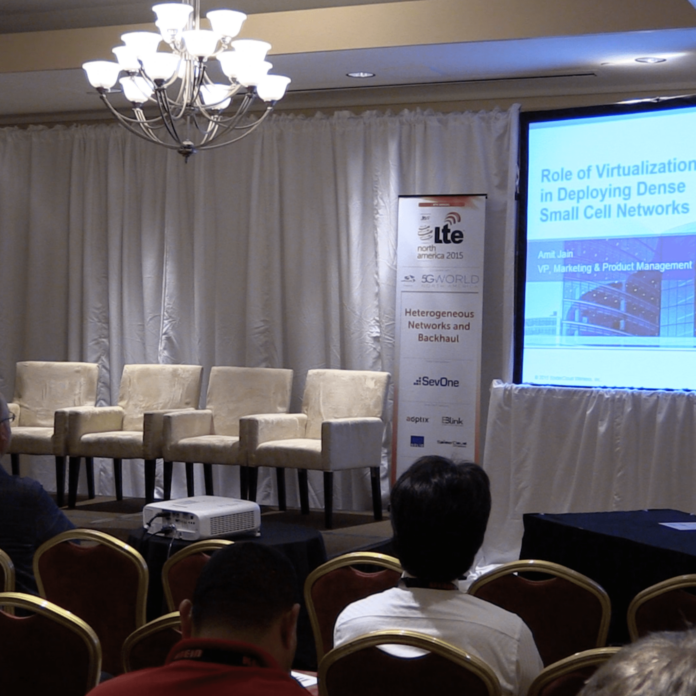DALLAS — It is becoming widely accepted that small cell networks are essential to cost-effectively bolster network capacity. At this year’s LTE North America conference, Amit Jain, VP of business development at SpiderCloud Wireless, spoke about the role virtualization will play in the densification of small cell networks.
Jain says the biggest issue is what the new architecture should look like. “The main problem we are all trying to look at is how do we split the base station architecture so that we can meet the three objectives of reducing cost, improve performance and making sure the network can evolve,” he explained.
Jain sees two different approaches gaining strength. The first is a centralized approach, which most of the big vendors are on board with. The second is a baseband at the edge, centralized coordination approach, which Jain and Spider Cloud believe is the most effective solution.
“The big base station vendors are promoting the so-called centralized base band approach in which you basically have the ENodeB, everything but the RF and that is hosted in some kind of centralized data center and then these ENodeBs are connected wirelessly with the [common public radio interface] to radio heads that are connected at cell sites,” he said of the approach, which runs the CPRI over dark fiber and requires less than 250 millisecond of latency.
Jain admits there are advantages to this approach. “The typical advantages that people will bring up of this architecture is this gives you a lot of flexibility in the way the base station can be used,” he said. “So there might be a radio head that is located in a residential area and there’s another radio head that is where people are at work. You can somehow load balance the capacity between these two different users to share the base station.”
One main reasons why Jain advocates “baseband at the edge” approach is he believes the technology will follow Moore’s Law and continue to become more cost effective.
“The key reason why we believe in having baseband at the edge is that baseband runs on silicon … as I look at the last several decades of electronics, there’s a cost curve of digital technologies of silicon versus that of analog technologies,” Jain said.
He also argues the “baseband at the edge” is essential for the use of unlicensed spectrum. “The biggest issue in unlicensed spectrum is that you have to share unlicensed spectrum. This is a huge difference from the way we have been looking at LTE so far in the licensed band because in the licensed band, all you have to do is schedule your packet and send them out,” Jain argued. “That’s it. You don’t have to worry about what else is happening on the channel. … In the unlicensed band, you have to work with a bunch of devices. You have to work with Wi-Fi, there’s Bluetooth. There could be a wide range of application that show up in the future and all these technologies have to coexist with each other.”
Jian admits there is no clear winner here just yet and much of the outcome depends on whether or not you bet on Moore’s Law.

